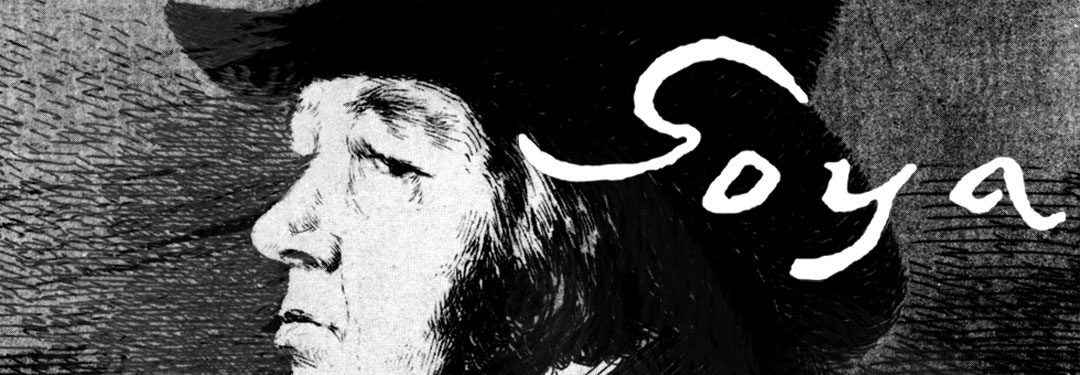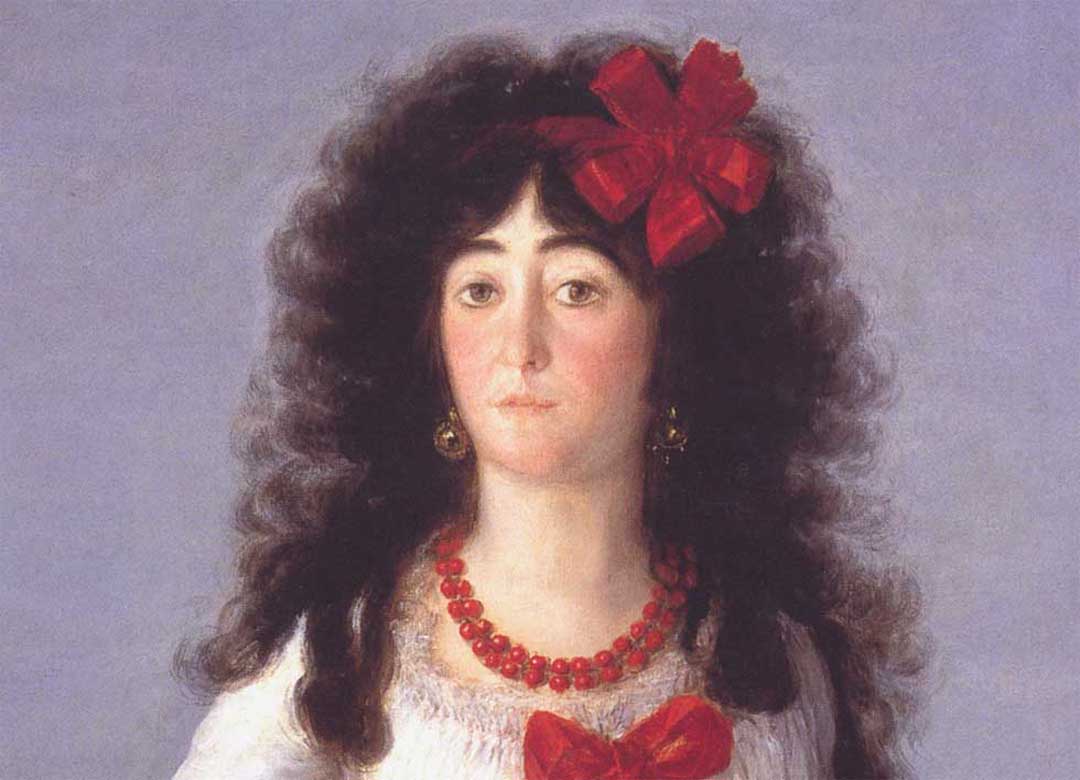Goya | "White Duchess"

Duquesa de Alba
This painting is sometimes called "The White Duchess"
1795 Oil on canvas
76.5" x 51.25" inches
194cm x 130cm
The Alba Collection, Madrid
Her full name was Maria del Pilar Teresa Cayetana de Silva Alvarez de Toledo, duchess d'Alba who lived 1762–1802. She died of tuberculosis and dengue fever.
(Page 124-125 of Sarah Symmons' book Goya, Phaidon Press Limited, 1998)"Goya's informal relationships with Spanish noblewomen reflect the social independence which aristocratic women were able to show subordinates and friends. English visitors to the Spanish court often expressed their consternation at the relaxation of etiquette that high-born wealthy women enjoyed. Early attempts to improve the position of women in Spain had enabled both married women and widows to assume a degree of social independence that was denied the unmarried female. Her full name was Maria del Pilar Teresa Cayetana de Silva Alvarez de Toledo, duchess d'Alba. She died of tuberculosis and dengue fever.
"Goya's informal relationships with Spanish noblewomen reflect the social independence which aristocratic women were able to show subordinates and friends. English visitors to the Spanish court often expressed their consternation at the relaxation of etiquette that high-born wealthy women enjoyed. Early attempts to improve the position of women in Spain had enabled both married women and widows to assume a degree of social independence that was denied the unmarried female. The Duchess of Alba was particularly well known for charm and willfulness and one of Goya's earliest references to her, in a letter to Zapater, describes how she persuaded him to make up her face: 'you'd be better off coming to help me paint the Alba woman, who yesterday came to the studio to make me paint her face, and she got her way; I certainly enjoy it more than painting on canvas, and I still have to do a full-length portrait of her.'"
The Duquesa de Alba, or Duchess of Alba, famously depicted by Francisco Goya, was María del Pilar Teresa Cayetana de Silva y Álvarez de Toledo, the 13th Duchess of Alba (1762–1802).
She was famous in her life time for her beauty, wealth, and free-spirited personality which sometimes shocked visitors coming from other lands. She was a prominent figure in late 18th-century Spanish society and is often remembered for her close relationship with Goya. Her noble status and charisma made her a compelling figure, and Goya painted her multiple times.
The Duchess of Alba's life was surrounded by intrigue and scandal and there has long been speculation about the nature of her relationship with Goya.
(Page 157 from Robert Hughes Goya, Knopf, 2003)"She was without question one of the most beautiful women in Spain– a fact noted by nearly every man who met and wrote about her. She was tall, slender, with flashing dark eyes and a fine-boned face– perhaps a little too long for modern tastes– surmounted by a mop of thick, dark curls... If the word existed in the eighteenth century, she would have been formidably hip– what else could an aristocratic maja wish to be?"
[Webmaster Note: Jenny in New Zealand pointed out via e-mail that this is not a bichon but a lowchen]"The 'White Duchess' was the one [painted] for semipublic consumption. It is a marvelous study in doubling and repetition built around two themes, red and white. The only other color in the portrait is Alba's mane of black hair, which is painted with an extraordinary and sensuous softness: it cascades down her back, and two thick tendrils caressing her shoulders. Her dress is very much in the French manner, not a bit like the maja style of the later [black] portrait; made of gauzy white muslin hemmed with gold embroidery, it is gathered high under her breasts and cinched with a broad crimson sash. The same red is repeated in the bow on her cleavage, in the double row of red coral beads around her throat, in the five-petaled silk bow in her hair, and– not least– in the sweetly parodical red bow her living accessory, a little long-haired creature of the breed known as a bichon frise...
...bears on its right hind leg. Clearly, Goya had been inspired– though not to the point of servile copying– by English modes of portraiture that he would have seen in reproduction, in the print cabinet of Sebastian Martinez: the lady of quality seen in a landscape with her attendant dog had often been painted by Romney, Gainsborough, and Reynolds. And the fact that the duchess is attired in flowing white Neoclassical-style rode, probably of Bengal muslin, also attests to Goya's interest in English Neoclassicism: he is known to have made, during the 1790s, copies after engravings by John Flaxman."
(Page 162 from Robert Hughes Goya, Knopf, 2003).
Dr. Sarah Symmons has an audio podcast file of a lecture about the Duchess of Alba here. (Currently not online.)

